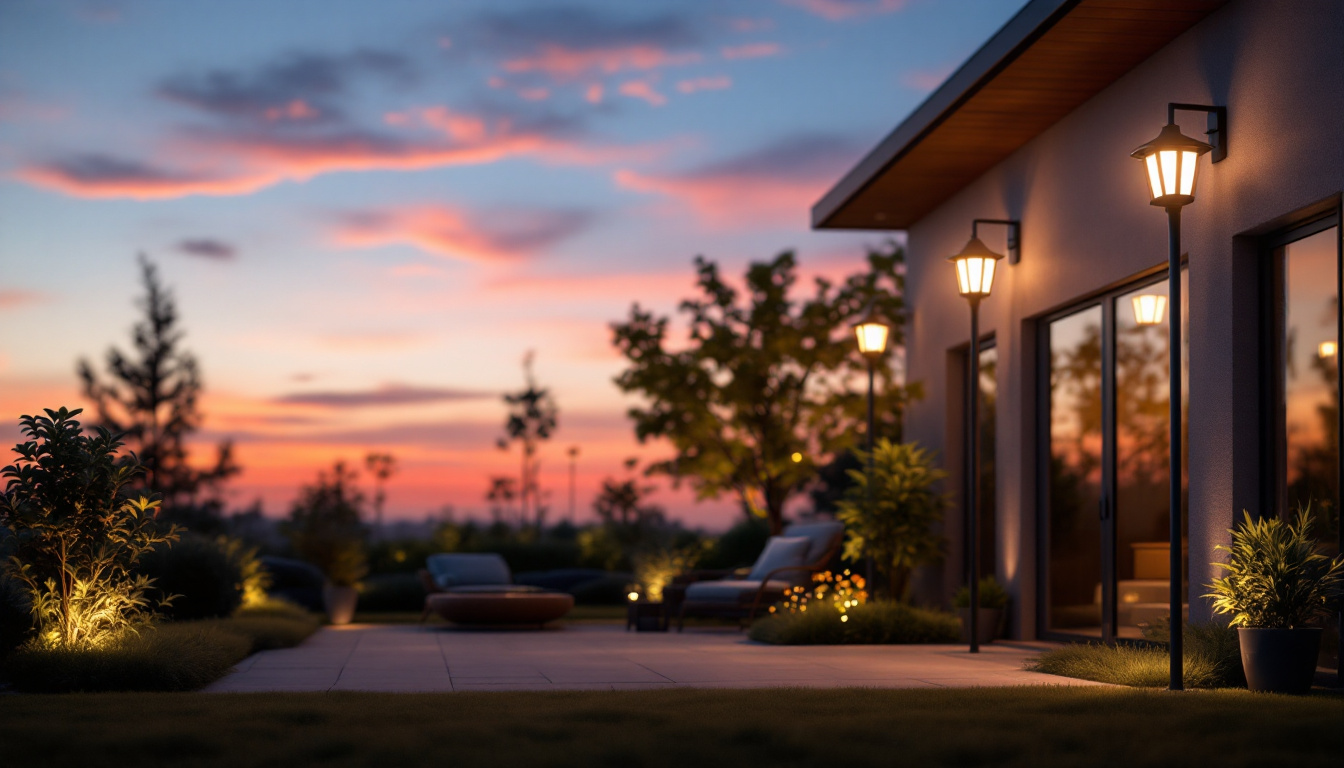
In the ever-evolving world of lighting design and installation, LED pendant lights have emerged as a game changer for lighting contractors. These fixtures not only enhance the aesthetic appeal of spaces but also offer significant energy efficiency and longevity compared to traditional lighting solutions. As contractors seek to provide clients with the best possible options, understanding the advantages of LED pendant lights becomes crucial.
LED, or Light Emitting Diode, technology represents a significant advancement in lighting. Unlike incandescent or fluorescent bulbs, LEDs produce light through electroluminescence, which involves the movement of electrons in a semiconductor material. This process results in a more efficient light source that consumes less energy and generates less heat.
One of the most compelling reasons to consider LED pendant lights is their energy efficiency. These fixtures typically use 75% less energy than traditional incandescent bulbs. For lighting contractors, this means not only lower energy bills for clients but also a reduced carbon footprint—a selling point that resonates well with environmentally conscious consumers.
Moreover, the efficiency of LED lights translates into longer operational lifespans. Many LED pendant lights can last up to 25,000 hours or more, significantly reducing the frequency of replacements. This longevity is particularly beneficial for contractors, as it minimizes the time and resources spent on maintenance and replacements.
LED pendant lights are known for their superior quality of light. They provide a bright, clear illumination that enhances the visibility and ambiance of any space. This quality is especially important in commercial settings, where lighting can impact productivity and mood. The ability to choose from various color temperatures allows contractors to tailor lighting solutions to meet specific client needs, whether for a warm, inviting atmosphere in a restaurant or a bright, focused light in an office.
Another significant advantage of LED pendant lights is their design versatility. Available in a wide range of styles, sizes, and finishes, these fixtures can complement any decor—from modern and sleek to rustic and traditional. This variety allows lighting contractors to offer customized solutions that align with their clients’ aesthetic preferences.
Many manufacturers provide customizable options for LED pendant lights, enabling contractors to create unique fixtures that meet specific project requirements. This flexibility can include adjustments in size, shape, and even light output. Such customization not only enhances the visual appeal of the space but also allows for better integration into existing designs.
Additionally, the ability to mix and match different styles of LED pendant lights can create a striking visual impact. For instance, combining various shapes and finishes in a single space can lead to a dynamic and engaging atmosphere, making the lighting a focal point of the design.
As smart home technology continues to gain traction, LED pendant lights are increasingly being designed with connectivity features. Many modern LED fixtures can be integrated with smart home systems, allowing for remote control, dimming, and scheduling. This capability not only enhances convenience for clients but also positions contractors as forward-thinking professionals who can provide cutting-edge solutions.
The integration of smart technology also opens up opportunities for energy savings, as clients can manage their lighting more effectively. For contractors, offering smart LED pendant lights can set them apart in a competitive market, showcasing their ability to adapt to emerging trends.
While LED pendant lights offer numerous benefits, lighting contractors must also consider the unique installation requirements associated with these fixtures. Understanding the nuances of installation can help ensure optimal performance and client satisfaction.
LED pendant lights can vary significantly in weight, depending on their design and materials. It’s essential for contractors to assess the structural integrity of the installation site to ensure that it can support the chosen fixtures. Proper suspension methods must be employed to guarantee safety and stability, especially in commercial environments where high ceilings are common.
Additionally, contractors should consider the height at which the pendant lights will be installed. The ideal height can vary based on the space and the intended use of the lighting. For example, in dining areas, pendant lights should be hung lower to create an intimate atmosphere, while in workspaces, higher installations may be more appropriate to avoid obstruction.
When installing LED pendant lights, it’s crucial to ensure that the electrical system can accommodate the new fixtures. This may involve upgrading wiring or circuits, especially if the installation includes multiple fixtures or smart technology integration. Lighting contractors should be well-versed in local electrical codes and standards to ensure compliance and safety.
Proper wiring not only affects the performance of the lights but also their longevity. Poor installation can lead to flickering, reduced brightness, or even premature failure of the fixtures. Therefore, attention to detail during the installation process is paramount.
For lighting contractors, presenting LED pendant lights as a cost-effective solution can be a compelling argument for clients. While the initial investment may be higher than traditional lighting options, the long-term savings associated with energy efficiency and reduced maintenance can lead to significant financial benefits.
Clients often seek to understand the return on investment (ROI) associated with their lighting choices. By highlighting the energy savings, longevity, and reduced maintenance costs of LED pendant lights, contractors can effectively illustrate the financial advantages. Many clients appreciate the opportunity to save money over time, making LED solutions an attractive option.
Furthermore, the enhanced quality of light provided by LED fixtures can contribute to improved productivity and satisfaction in commercial settings. This added value can further justify the initial costs, making it easier for contractors to secure client buy-in for LED installations.
Many regions offer incentives and rebates for energy-efficient lighting upgrades, including LED installations. Contractors should stay informed about available programs that can benefit their clients. By educating clients about these opportunities, contractors can help reduce upfront costs and encourage the adoption of LED technology.
These incentives not only enhance the overall cost-effectiveness of LED pendant lights but also position contractors as knowledgeable professionals who are committed to helping clients make informed decisions.
Real-world examples can be powerful tools for lighting contractors looking to promote the benefits of LED pendant lights. By showcasing successful installations, contractors can provide tangible evidence of the advantages these fixtures offer.
In commercial environments, LED pendant lights have been instrumental in transforming spaces. For instance, a recent project in a modern office building involved replacing outdated fluorescent fixtures with sleek LED pendant lights. The result was not only a dramatic improvement in aesthetics but also enhanced energy efficiency, leading to a significant reduction in the building’s energy consumption.
Employees reported increased satisfaction and productivity, attributing the improved lighting to a more inviting and comfortable work environment. This case exemplifies how LED pendant lights can positively impact both the visual appeal and functionality of commercial spaces.
In residential settings, LED pendant lights have also made a mark. A recent renovation of a kitchen featured the installation of stylish LED pendant lights above the island. The homeowners were thrilled with the transformation, noting that the new lighting not only improved visibility but also added a contemporary touch to their home.
The energy savings realized from the switch to LED technology were a significant bonus, as the homeowners were able to reduce their monthly utility bills while enjoying a beautiful and functional kitchen space. Such success stories serve as powerful testimonials for the effectiveness of LED pendant lights.
As technology continues to advance, the future of LED lighting holds exciting possibilities. Lighting contractors should stay abreast of emerging trends to remain competitive and provide clients with the latest innovations.
One of the most promising trends is the development of human-centric lighting, which focuses on creating lighting solutions that support human well-being. This approach considers factors such as circadian rhythms and the psychological effects of light on mood and productivity. LED pendant lights that can adjust color temperature and intensity throughout the day are becoming increasingly popular in both residential and commercial settings.
Contractors who embrace this trend can offer clients lighting solutions that not only illuminate spaces but also enhance overall well-being. This forward-thinking approach can differentiate contractors in a crowded market, positioning them as leaders in the industry.
As the push for sustainability continues, the integration of LED lighting with renewable energy sources is gaining traction. Solar-powered LED pendant lights are becoming more common, providing an eco-friendly lighting solution for outdoor spaces and remote locations. By staying informed about these developments, contractors can offer innovative solutions that align with clients’ sustainability goals.
Furthermore, the combination of LED technology with smart home systems and renewable energy can create comprehensive lighting solutions that are not only efficient but also environmentally responsible. This holistic approach to lighting design will likely become a key selling point for contractors in the future.
LED pendant lights represent a significant advancement in lighting technology, offering numerous benefits for both contractors and clients. From energy efficiency and design versatility to enhanced quality of light and cost-effectiveness, these fixtures are transforming the landscape of lighting design and installation.
As contractors continue to embrace LED technology, they position themselves as leaders in the industry, capable of providing innovative and sustainable solutions. By staying informed about trends and advancements, lighting contractors can ensure that they meet the evolving needs of their clients while enhancing their own business prospects.
In a world where energy efficiency and aesthetics are paramount, LED pendant lights are not just a trend; they are a smart choice for lighting contractors looking to boost their efficiency and elevate their offerings.
Ready to enhance your lighting projects with the efficiency and elegance of LED pendant lights? Look no further than LumenWholesale for a vast selection of premium, spec-grade lighting products at unbeatable wholesale prices. Say goodbye to inflated markups and hello to high-performance lighting that meets the highest industry standards. With free shipping on bulk orders, you can trust that you’re getting the best value without any hidden fees. Elevate your lighting solutions today and experience the perfect blend of quality, affordability, and convenience. Visit LumenWholesale now and secure the best in wholesale lighting for your next project.

Discover how an outdoor work lamp can transform your lighting projects from ordinary to extraordinary.

Discover the essential insights every lighting contractor needs with our comprehensive guide on Fo32/841/Eco lighting solutions.

Illuminate your projects with precision using dusk to dawn sensor lights.

Discover how vapor light technology is transforming the lighting industry by offering cost-effective solutions for contractors.